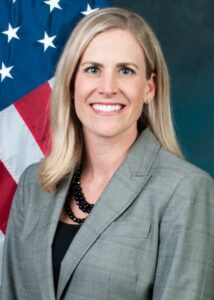WASHINGTON, DC – As VA moves forward with its long-delayed search for a supply chain management system, the department plans to use the process as a de-facto trial of its new acquisitions’ framework–a system designed to ensure the department uses its money effectively when it comes to major projects. However, that framework is not yet fully complete, and VA stakeholders are concerned that the agency is destined to repeat past mistakes.
A recent Government Accountability Office (GAO) report detailed VA’s acquisition struggles, which have been on the watchdog’s high-risk list since 2019. It put much of the blame on VA’s lack of an effective acquisitions’ management framework. A framework is essentially a series of checks and measures throughout a project’s lifecycle to determine project requirements, cost estimates, schedules, and metrics for success.
While VA put such a framework in place in 2017, it was essentially voluntary and few major programs used it. This contributed to cost overruns, project delays, and in the case of the electronic health record system pilot at the Mann Grandstaff VAMC in Spokane, led directly to patient harm.
“Acquisition management may seem like just an administrative process…but it has a direct effect both positive and negative on the quality of healthcare that veterans receive from VA,” explained Shelby Oakley, GAO’s Director of Contracting and National Security Acquisitions at a VA House Technology Subcommittee hearing last month. “VA is now one of the biggest acquisition players in the government. We’ve seen an 89% increase in contract spending since 2012 to $38 billion in 2021.”
Oakley agreed with VA officials that its new framework–the Acquisitions Lifecycle Framework (ALF)—could solve many of the department’s problems when it comes to preparing for and implementing major projects.
“Will we be seeing better outcomes from VA acquisition programs if they followed a robust framework. Yes we would. A good acquisitions framework provides decision makers good support to make or deny investments,” she explained. “This can include credible cost information and an analysis of available alternatives.”
However, GAO is concerned that ALF will go the way of the previous framework, with programs picking and choosing which aspects of the system to follow and VA unable to track or enforce its use.
“None of VA’s major acquisitions followed the existing framework, and we’re worried the new framework will meet the same fate,” Oakley declared.
More Expensive
VA’s supply chain management program was one of those major acquisitions that failed to adhere to the previous framework. While the department did conduct an early market analysis that showed other solutions would meet its requirements and cost less in doing so, VA decided to adopt the Defense Medical Logistics Standard Support (DMLSS), which was in use at DoD. It would later be learned that, not only was DMLSS more expensive than other solutions, but it failed to meet 44% of staff requirements at the one pilot site where it was deployed.
Now, VA is planning to move forward with its search for a new solution.
“We’ll use the supply chain modernization effort as a proof of concern of what we’re doing with this acquisition lifecycle framework,” explained Michael Parrish, VA’s Chief Acquisition Officer.
Parrish admitted that VA’s supply management chain needs are exceptionally complex, and that they’ve identified at least seven separate supply chains within the department, including IT, medical services, and facilities management.
As the pandemic helped reveal, VA’s inability to track inventory, orders, and what assets were present at what facilities, could lead to chaos and confusion, especially in times of emergency. It’s these types of deficiencies that are spurring VA to move forward with finalizing the request for proposals for a new supply chain management system before ALF is fully implemented.
The major concern from GAO is not whether ALF will work when properly implemented, but that VA currently lacks the ability to track all of its major acquisitions or the personnel tasked with implementing them.
“We did a lot of work trying to ask, What are your acquisition programs. Give us a list,” Oakley explained. “That’s not something that’s currently happening within the organization, aside from the biggies like EHRM and supply chain modernization.”
She added that it took GAO six months to get the total number of VA employees engaged in acquisitions, and even then it was incomplete, missing information such as retirement dates, which can be key in personnel management.
Asked if she’d ever seen VA successfully complete an acquisition of over $1 billion, Oakley said, “In my short history of six years at VA, I have not experienced that. So I think that’s why it’s very important for this new effort to get off on the right foot.”


